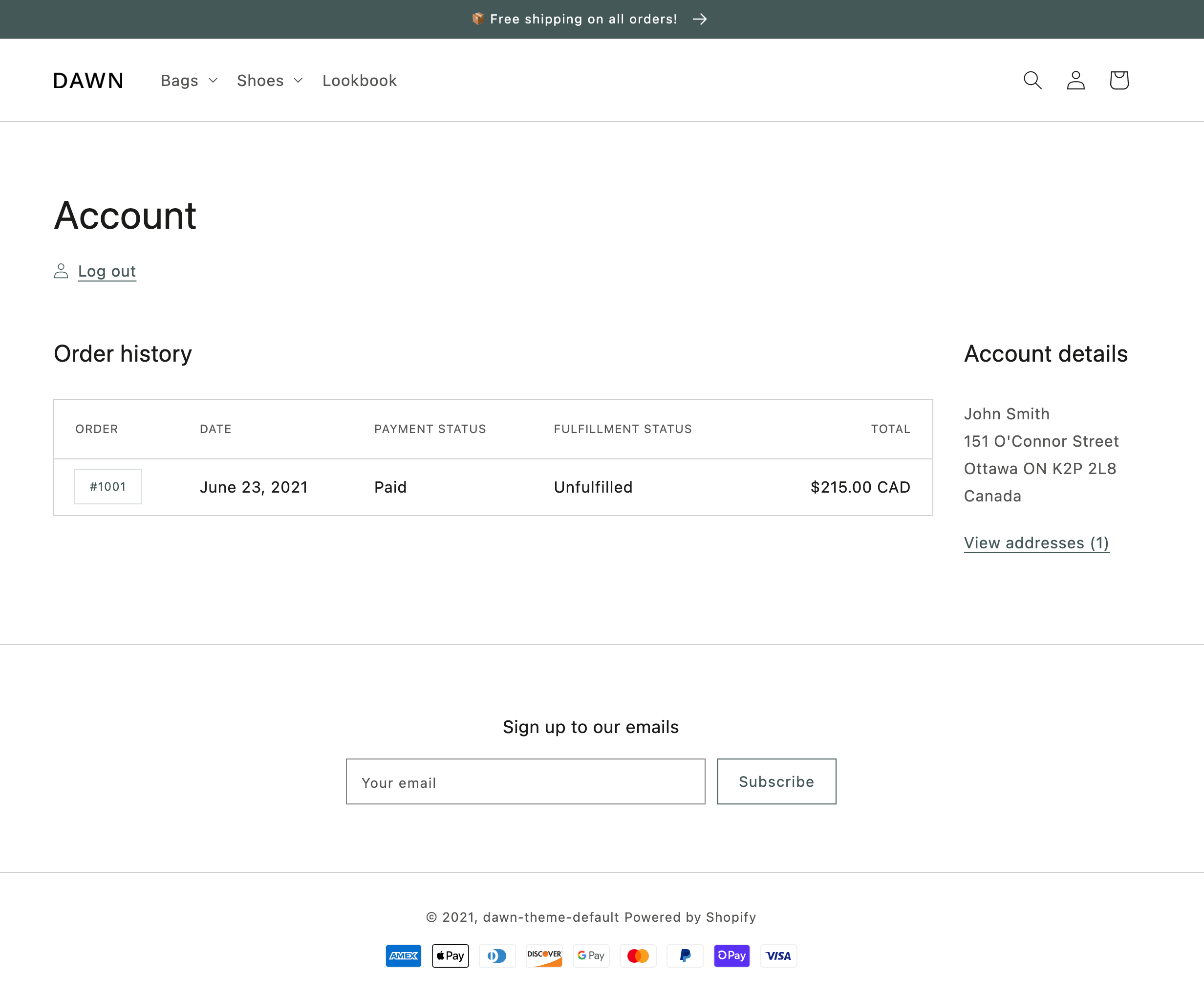---
title: customers/account
description: >-
Learn about the customer account template, which provides an overview of the
customer's account.
source_url:
html: >-
https://shopify.dev/docs/storefronts/themes/architecture/templates/customers-account
md: >-
https://shopify.dev/docs/storefronts/themes/architecture/templates/customers-account.md
---
ExpandOn this page
* [Location](https://shopify.dev/docs/storefronts/themes/architecture/templates/customers-account.md#location)
* [Content](https://shopify.dev/docs/storefronts/themes/architecture/templates/customers-account.md#content)
* [Usage](https://shopify.dev/docs/storefronts/themes/architecture/templates/customers-account.md#usage)
# customers/account
The `customers/account` template renders the customer account page, which provides an overview of the [customer’s account](https://help.shopify.com/manual/customers/customer-accounts).
This is a legacy customer account template. You can exclude all [legacy customer account templates](https://shopify.dev/docs/storefronts/themes/architecture/templates#legacy-customer-account-templates) from your theme.
Tip
Refer to the [customers/account template](https://github.com/Shopify/dawn/blob/main/templates/customers/account.json) and its [main section](https://github.com/Shopify/dawn/blob/main/sections/main-account.liquid) in Dawn for an example implementation.

***
## Location
The `customers/account` template is located in the `templates` > `customers` directory of the theme:
```text
└── theme
├── layout
├── templates
| └── customers
| ├── account.json
| ...
...
```
***
## Content
You should include the [customer object](#the-customer-object) in your `customers/account` template or a section inside of the template.
### The customer object
You can access the Liquid [`customer` object](https://shopify.dev/docs/api/liquid/objects/customer) to display the customer account details.
***
## Usage
When working with the `customers/account` template, you should familiarize yourself with the following:
* [Showing the customer's orders](#show-the-customer-s-orders)
* [Showing the customer's default address](#show-the-customer-s-default-address)
Tip
If you're using a JSON template, then any HTML or Liquid code needs to be included in a [section](https://shopify.dev/docs/storefronts/themes/architecture/sections) that's referenced by the template.
### Show the customer’s orders
You should show customers a list of their orders. These can be accessed through the `order` attribute of the [customer object](https://shopify.dev/docs/api/liquid/objects/customer#customer-orders), and have a limit of 20 per page. For this reason, you should paginate orders to ensure that they’re all accessible:
## Example
```liquid
{% paginate customer.orders by 10 %}
{% for order in customer.orders %}
{% endfor %}
{{ paginate | default_pagination }}
{% endpaginate %}
```
### Show the customer’s default address
You should show customers their default address. This can be accessed through the `default_address` attribute of the [customer object](https://shopify.dev/docs/api/liquid/objects/customer#customer-default_address):
## Example
```liquid
{% if customer.default_address %}
{{ customer.default_address.address1 }}
{% if customer.default_address.address2 != blank %}
{{ customer.default_address.address2 }}
{% endif %}
{{ customer.default_address.city }}, {% if customer.default_address.province_code %}{{ customer.default_address.province_code }}{% endif %}, {{ customer.default_address.country_code }}
{{ customer.default_address.zip_code }}
{{ customer.default_address.phone }}
{% endif %}
```
***
* [Location](https://shopify.dev/docs/storefronts/themes/architecture/templates/customers-account.md#location)
* [Content](https://shopify.dev/docs/storefronts/themes/architecture/templates/customers-account.md#content)
* [Usage](https://shopify.dev/docs/storefronts/themes/architecture/templates/customers-account.md#usage)